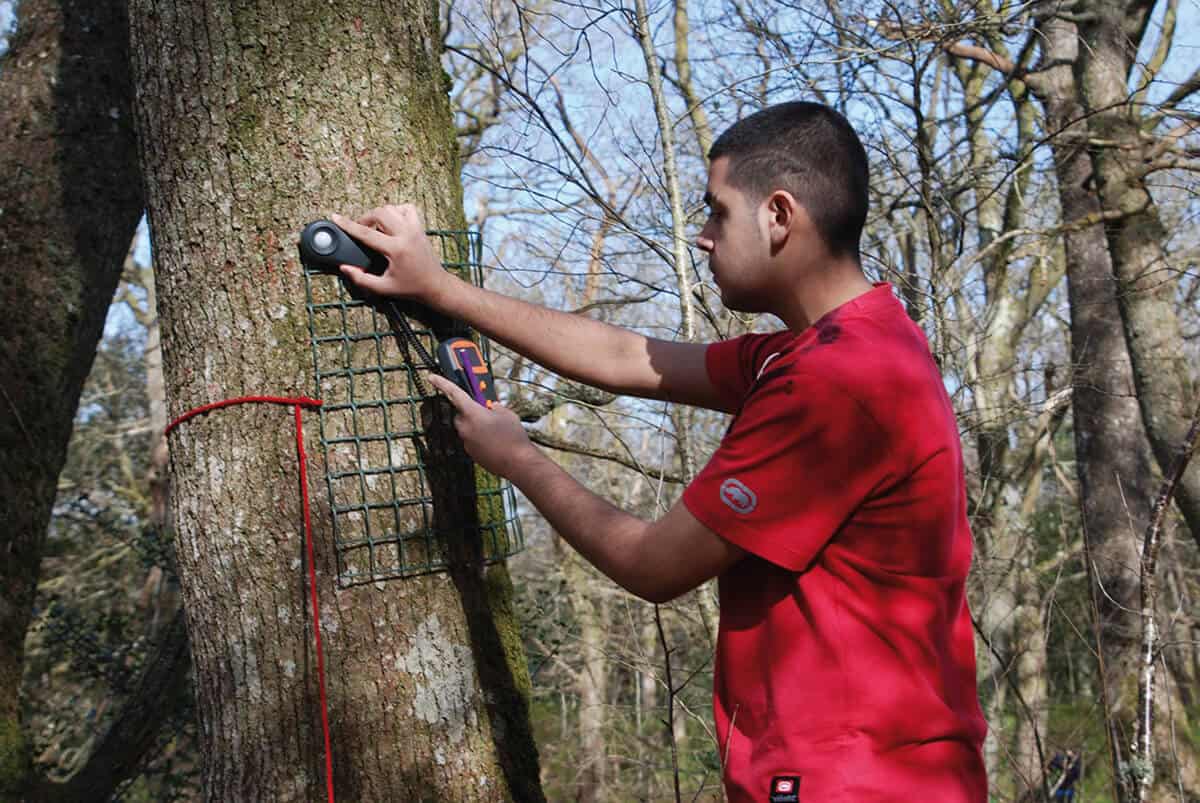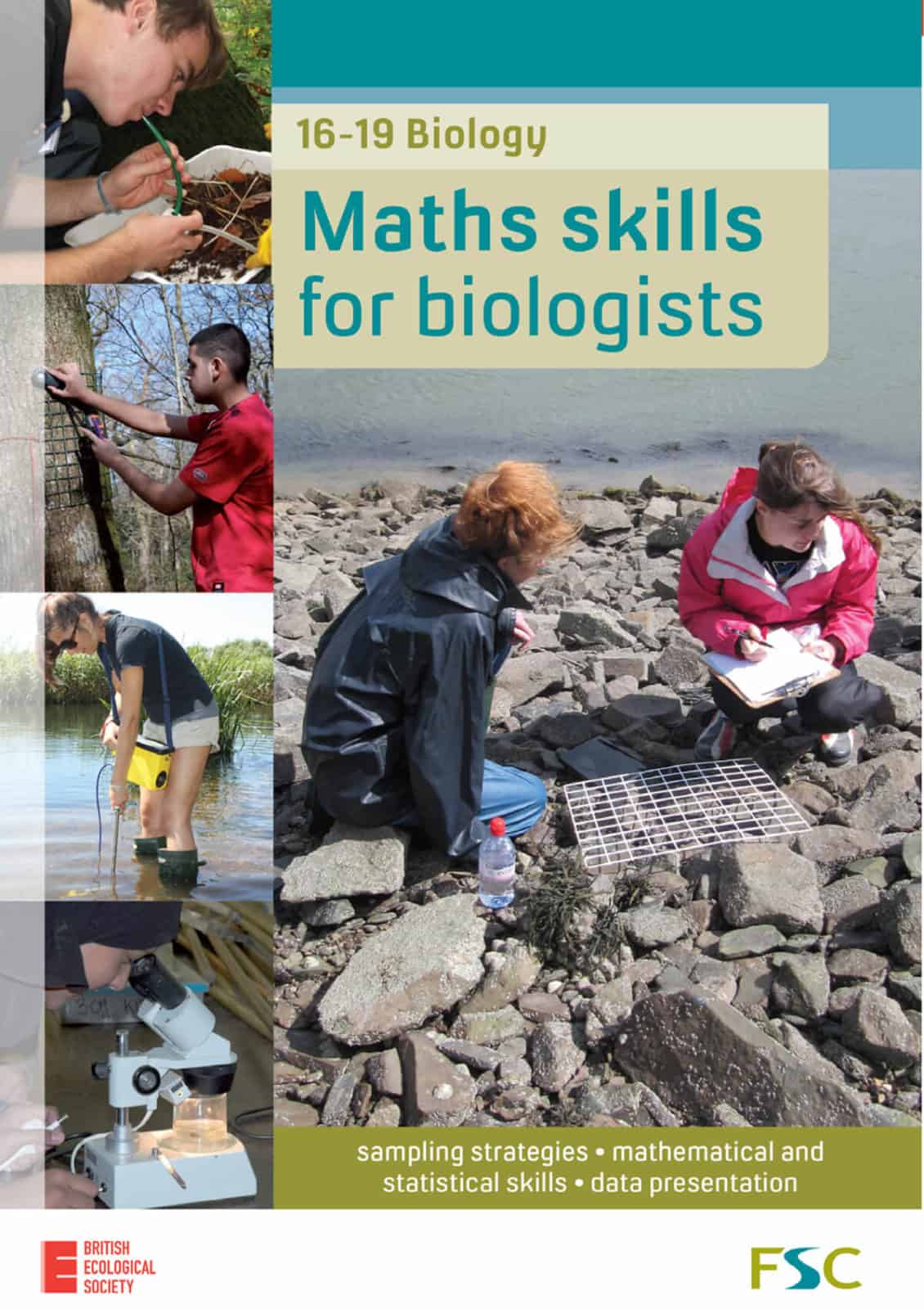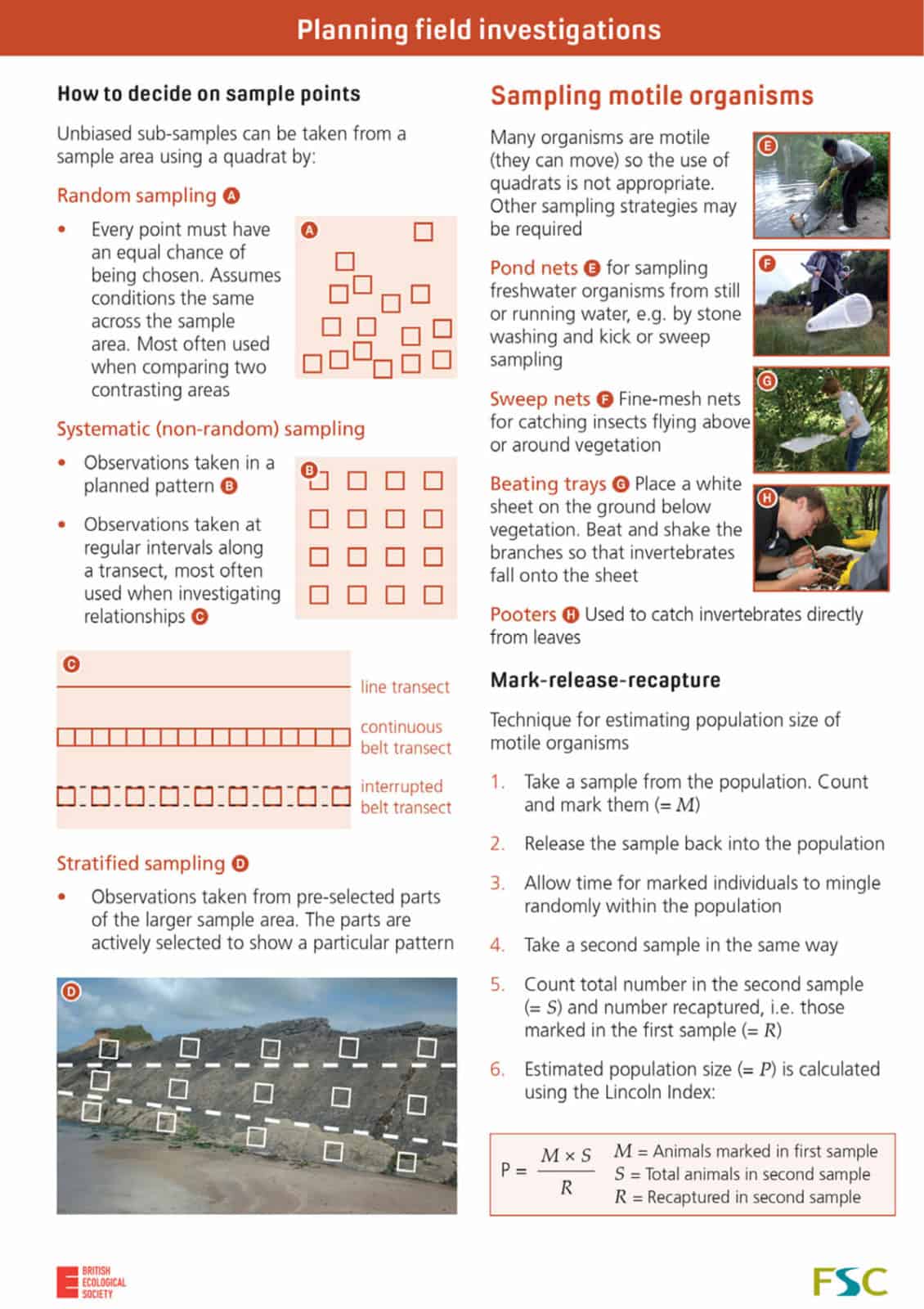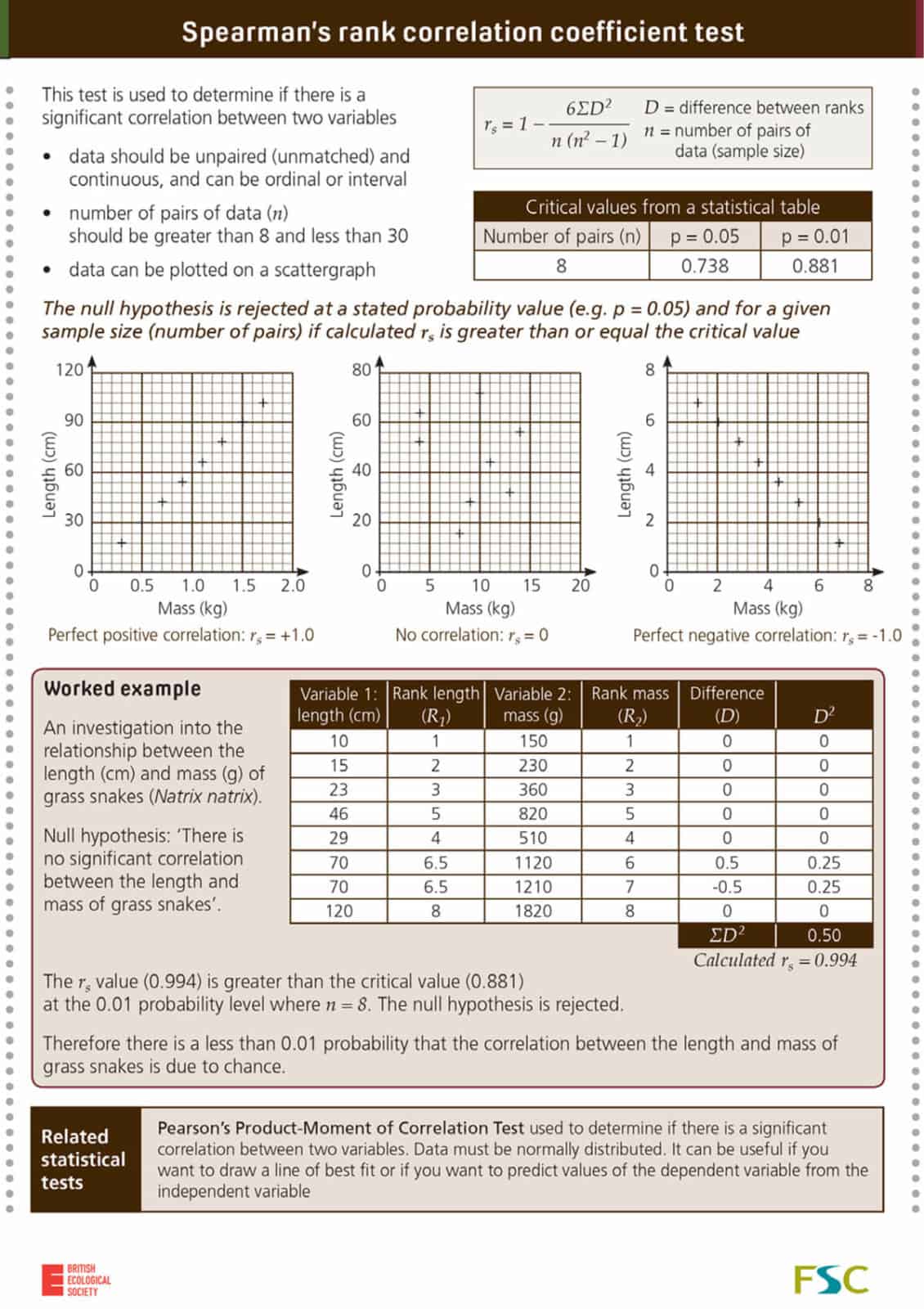Maths skills for biologists
Maths skills for biologists is for students and teachers of 16-19 Biology. This fold-out guide is a fast desktop reference to the key mathematical and statistical skills.
- Planning field investigations. Asking ecological questions. Designing a sampling strategy. Identifying the independent and dependent variables. Qualitative data (species lists, ACFOR scales). Quantitative data (interval, ordinal, categorical). How to decide on sampling points (random, systematic and stratified sampling). Techniques for sampling motile organisms, including mark-release-recapture.
- Mathematical skills. Accuracy, precision and errors, including random and systematic errors. Averages (mean, mode, median). Measures of dispersion, including standard deviation and standard error. Measuring species richness and diversity using Simpson’s Diversity Index and Simpson-Yule Diversity Index.
- Statistical tests. Understanding null and alternative hypotheses. Critical values, probability levels and degrees of freedom. Choosing an appropriate test to assess association or correlation. Student’s t test with worked example. Mann Whitney U test with worked example. Spearman’s rank correlation coefficient test with worked example. Chi square test with worked example.
- Data presentation. A range of graphical techniques, including bar chart, histogram, pie chart, line graph and scattergraph. Box and whisker plots, with definitions and a worked example of median, range and interquartile range. The use of error bars.
Rather than treat biological investigations as just a set of instructions to be followed, we are keen to leave students with a deeper appreciation of the scientific method.
Maths skills for biologists was developed by the British Ecological Society and FSC.
Need to buy multiple charts? Order a class set of 20 copies and save 20% off the cost of ordering individual copies.




